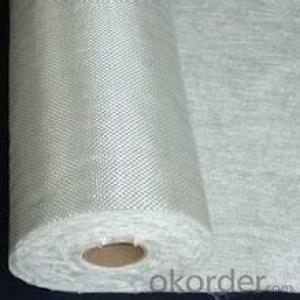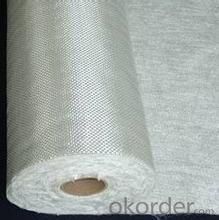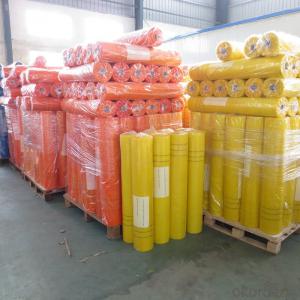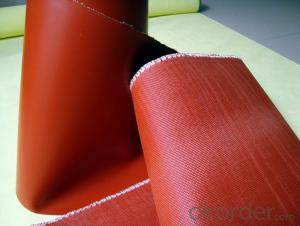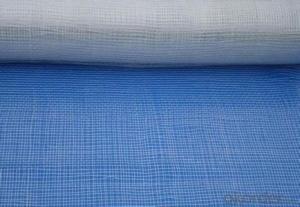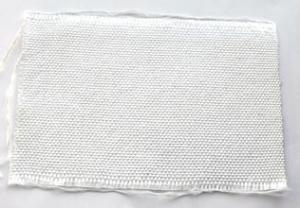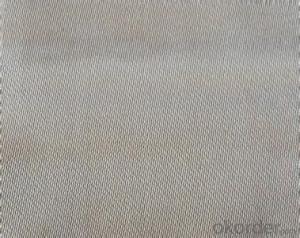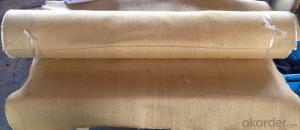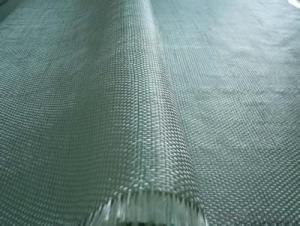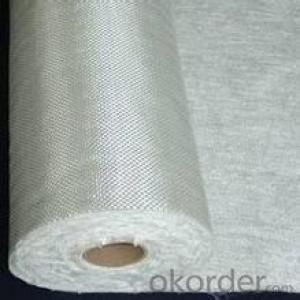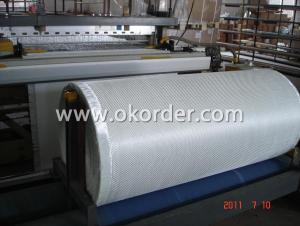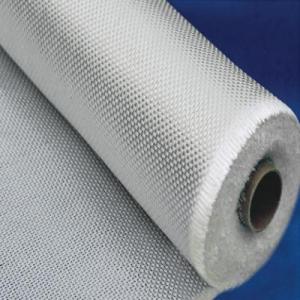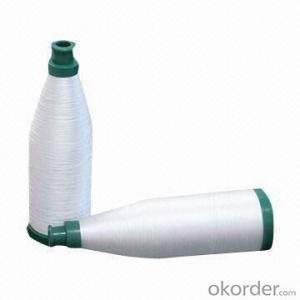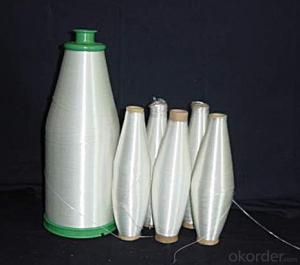Fiberglass Fabrics Silica Fiber Glass Cloth
- Loading Port:
- China Main Port
- Payment Terms:
- TT OR LC
- Min Order Qty:
- -
- Supply Capability:
- -
OKorder Service Pledge
Quality Product, Order Online Tracking, Timely Delivery
OKorder Financial Service
Credit Rating, Credit Services, Credit Purchasing
You Might Also Like
Quick Details
| Place of Origin: | Brand Name: | Model Number: | |||
| Application: | Weight: | Surface Treatment: | |||
| Width: | Weave Type: | Yarn Type: | |||
| Alkali Content: | Standing Temperature: |
Packaging & Delivery
| Packaging Detail: | 50m/carton |
| Delivery Detail: | about 20days |
Specifications
1. High silica glass fiber cloth.
2. High temperature resistance.
3. Instant working temp.: 1400C degree
- Q: Rural cement flat roof room, how to do waterproof, anti leakage best?
- (1) laying flexible waterproof layer, choose coating or coil can. The construction conditions require that the moisture content of the base surface is not greater than 9%, so it is suitable for construction in the summer after 5 days of hot weather. After completion, water storage experiments should be carried out;(2) such as waterproof coating, a coated cloth two "for example: clean up the grass, full of paint, dry film, laying a layer of glass fiber cloth reinforced matrix materials, and in the exhibition has fixed full brush a layer of paint on the surface, drying after construction paint. The overall thickness of waterproof coating should be more than 3 millimeters;(3) if the construction of waterproof coiled material is done, after cleaning the base, glue the adhesive on the back of the coil and the base, and press and close the base line according to the good benchmark, and finally do the inspection of the seam joint.
- Q: Can fiberglass fabric be used for insulation in telecommunications infrastructure?
- Fiberglass fabric is indeed a suitable option for insulation in telecommunications infrastructure. Its remarkable thermal insulation properties make it an optimal choice for insulating various components within the telecommunications industry. By effectively preventing heat loss or gain, it ensures that equipment functions within the desired temperature range. Moreover, fiberglass fabric's lightweight nature, flexibility, and easy installation process make it a convenient solution for insulating cables, antennas, and other infrastructure components. Additionally, its resistance to moisture, chemicals, and fire offers an extra layer of protection to the insulation system. All in all, fiberglass fabric is extensively utilized and considered an appropriate material for insulation in telecommunications infrastructure.
- Q: Can fiberglass fabric be used for reinforcement in sports equipment?
- Yes, fiberglass fabric can be used for reinforcement in sports equipment. Fiberglass fabric is known for its high strength-to-weight ratio, making it an ideal material for reinforcing various sports equipment such as skis, snowboards, surfboards, and even tennis rackets. The fiberglass fabric is typically combined with a resin matrix to create a strong and durable composite material that can withstand the high stress and impact experienced during sports activities. Additionally, fiberglass fabric can also provide flexibility and enhance the overall performance of the equipment by improving its torsional and bending properties. Therefore, fiberglass fabric is commonly used as a reinforcement material in sports equipment to enhance their strength, durability, and performance.
- Q: Is fiberglass fabric resistant to UV degradation?
- Generally, fiberglass fabric is resistant to UV degradation. It is composed of fine glass fibers woven together to create a fabric. These fibers possess inherent properties that make them highly resistant to the damaging effects of UV radiation. While many materials can degrade and discolor over time due to UV rays from the sun, fiberglass fabric is designed to endure prolonged exposure to sunlight without significant harm. The glass fibers in the fabric remain unaffected by UV rays, making fiberglass fabric a durable and long-lasting material for outdoor use. However, it is important to note that extended exposure to intense UV radiation may still cause some level of degradation. Therefore, it is advised to take appropriate care and maintenance measures, such as regular cleaning and occasional application of UV protectant coatings, to ensure the longevity of fiberglass fabric in outdoor settings.
- Q: Are fiberglass fabrics prone to fading or discoloration over time?
- Indeed, as time goes by, fiberglass fabrics are prone to fading or discoloration. Although fiberglass itself is resistant to fading, the fabrics derived from it can still be influenced by extended exposure to sunlight, adverse weather conditions, and specific chemicals. Gradually, the fabric may fade and lose its original color due to the sun's UV rays. Furthermore, if the fabric encounters substances like chlorine or bleach, it may also undergo discoloration. While regular upkeep, including cleaning and the application of protective coatings, can aid in slowing down the fading or discoloration process, it is incapable of entirely preventing it.
- Q: How does fiberglass fabric perform in filtration efficiency?
- Fiberglass fabric is known for its excellent filtration efficiency. It is widely used in various filtration applications due to its ability to effectively capture and remove particles from air or liquid streams. The fabric's intricate structure consists of tiny interwoven fibers that create a dense network of filtration media. This structure allows for high surface area and porosity, enabling the fabric to efficiently trap and retain even the smallest particles. The filtration efficiency of fiberglass fabric is primarily determined by its fiber diameter, thickness, and density. Smaller fiber diameters and higher fabric densities contribute to better filtration performance as they provide more opportunities for particle capture. Moreover, the fabric's electrostatic properties enhance its filtration efficiency by attracting and trapping charged particles. Fiberglass fabric has proven to be highly effective in removing a wide range of contaminants, including dust, pollen, mold spores, bacteria, and even certain gases and odors. Its exceptional filtration efficiency makes it a popular choice in applications such as HVAC systems, industrial dust collectors, automotive air filters, and water treatment systems. In summary, fiberglass fabric performs exceptionally well in filtration efficiency. Its unique structure, combined with its electrostatic properties, enables it to effectively capture and remove particles, making it a reliable choice for various filtration applications.
- Q: Are fiberglass fabrics suitable for use in the aerospace industry?
- Yes, fiberglass fabrics are suitable for use in the aerospace industry. Fiberglass fabrics are known for their high strength-to-weight ratio, making them ideal for aerospace applications where weight reduction is crucial. They offer excellent resistance to heat, chemicals, and abrasion, making them suitable for use in the extreme conditions of space travel. Additionally, fiberglass fabrics can be engineered to have specific properties such as high conductivity or low thermal expansion, which are important in aerospace applications. They are commonly used in the construction of aircraft components, such as wings, fuselages, and rotor blades, as well as in spacecraft and satellites. Overall, fiberglass fabrics provide the necessary strength, durability, and performance required for aerospace industry standards.
- Q: Can fiberglass fabric be used for insulation boards?
- Yes, fiberglass fabric can be used for insulation boards. Fiberglass is a highly effective insulating material due to its low thermal conductivity. It is commonly used in the construction industry for insulation purposes, including for insulation boards. Fiberglass fabric can be applied as a layer on insulation boards to enhance their thermal resistance and prevent heat transfer. The fabric is lightweight, flexible, and easy to install, making it suitable for various insulation applications. Additionally, fiberglass fabric is resistant to moisture and fire, which adds to its suitability for insulation board usage.
- Q: What are the different fiberglass fabric finishes for mold resistance?
- There exists a range of finishes for fiberglass fabric that effectively resist the growth of mold. These finishes are specially formulated to prevent mold and mildew from proliferating on the fabric's surface. Some commonly utilized finishes include: 1. Anti-microbial finish: This finish contains substances that hinder the development of microorganisms, encompassing mold and mildew. It forms a protective barrier on the fabric, deterring the attachment and growth of mold spores. 2. Fungicide finish: By incorporating fungicidal agents, this finish actively eliminates existing mold and mildew while also preventing their growth. It eradicates any mold spores present on the fabric. 3. Biocide finish: Comparable to the fungicide finish, this finish employs biocidal agents that effectively combat a wider range of microorganisms, including mold. It provides enduring protection against mold growth. 4. Moisture-wicking finish: Given that mold thrives in damp environments, a moisture-wicking finish is vital in preventing its growth. This finish facilitates the rapid evaporation of moisture from the fabric, reducing the conditions necessary for mold development. 5. Water-resistant finish: By repelling water and impeding its infiltration into the fabric fibers, a water-resistant finish diminishes the fabric's susceptibility to moisture absorption. This, in turn, minimizes the conditions that foster mold growth. 6. UV-resistant finish: Particularly in outdoor applications, ultraviolet (UV) radiation can contribute to mold growth. A UV-resistant finish safeguards the fabric against the detrimental effects of UV rays, thereby reducing the risk of mold formation. It is worth noting that different manufacturers of fiberglass fabric may employ their own exclusive finishes or combinations thereof to achieve mold resistance. Thus, it is advisable to consult the fabric supplier or manufacturer in order to ascertain the specific finishes available and their suitability for a given application.
- Q: Can fiberglass fabric be used for making window screens?
- Yes, fiberglass fabric can be used for making window screens. Fiberglass is a lightweight and durable material that is resistant to tears, corrosion, and UV rays, making it an ideal choice for window screens. It is also highly flexible, allowing for easy installation and removal. Additionally, fiberglass fabric has a fine mesh structure that effectively keeps out insects while still allowing for airflow and visibility. Overall, fiberglass fabric is a popular and reliable option for making window screens.
Send your message to us
Fiberglass Fabrics Silica Fiber Glass Cloth
- Loading Port:
- China Main Port
- Payment Terms:
- TT OR LC
- Min Order Qty:
- -
- Supply Capability:
- -
OKorder Service Pledge
Quality Product, Order Online Tracking, Timely Delivery
OKorder Financial Service
Credit Rating, Credit Services, Credit Purchasing
Similar products
Hot products
Hot Searches
Related keywords
